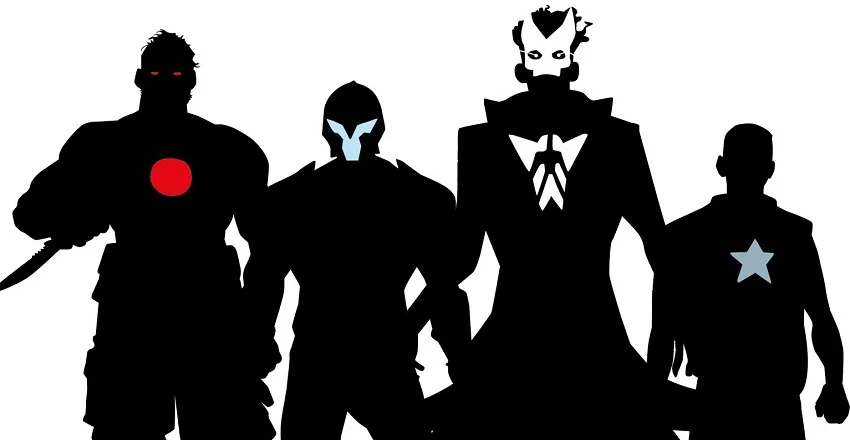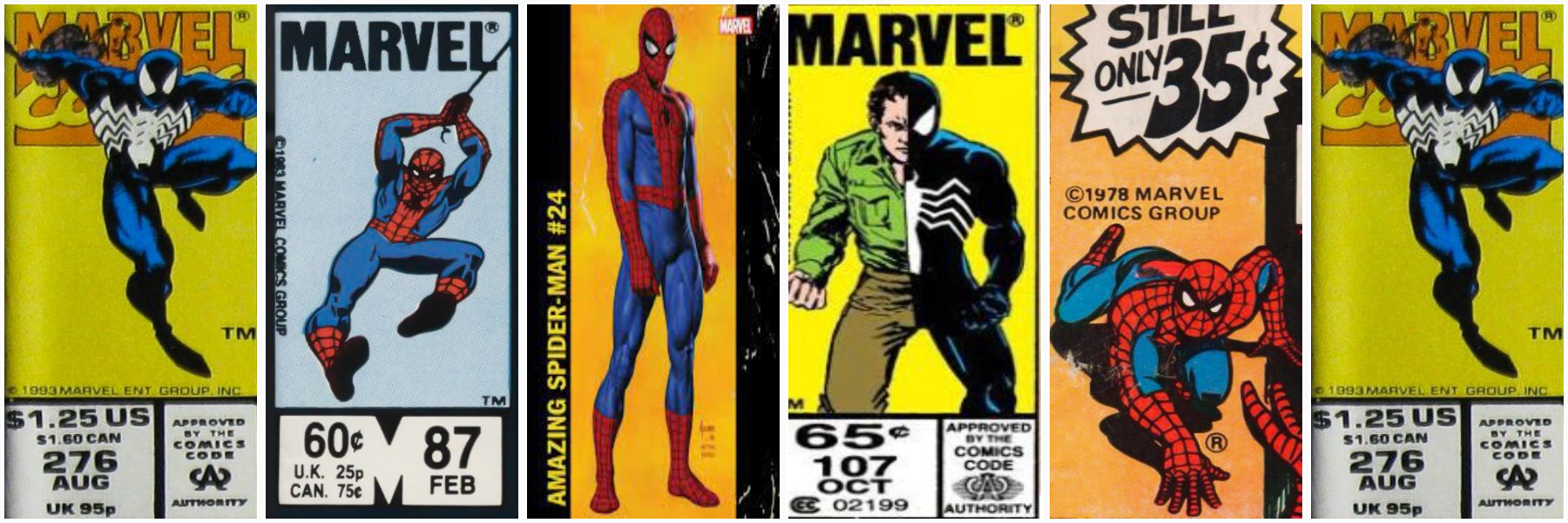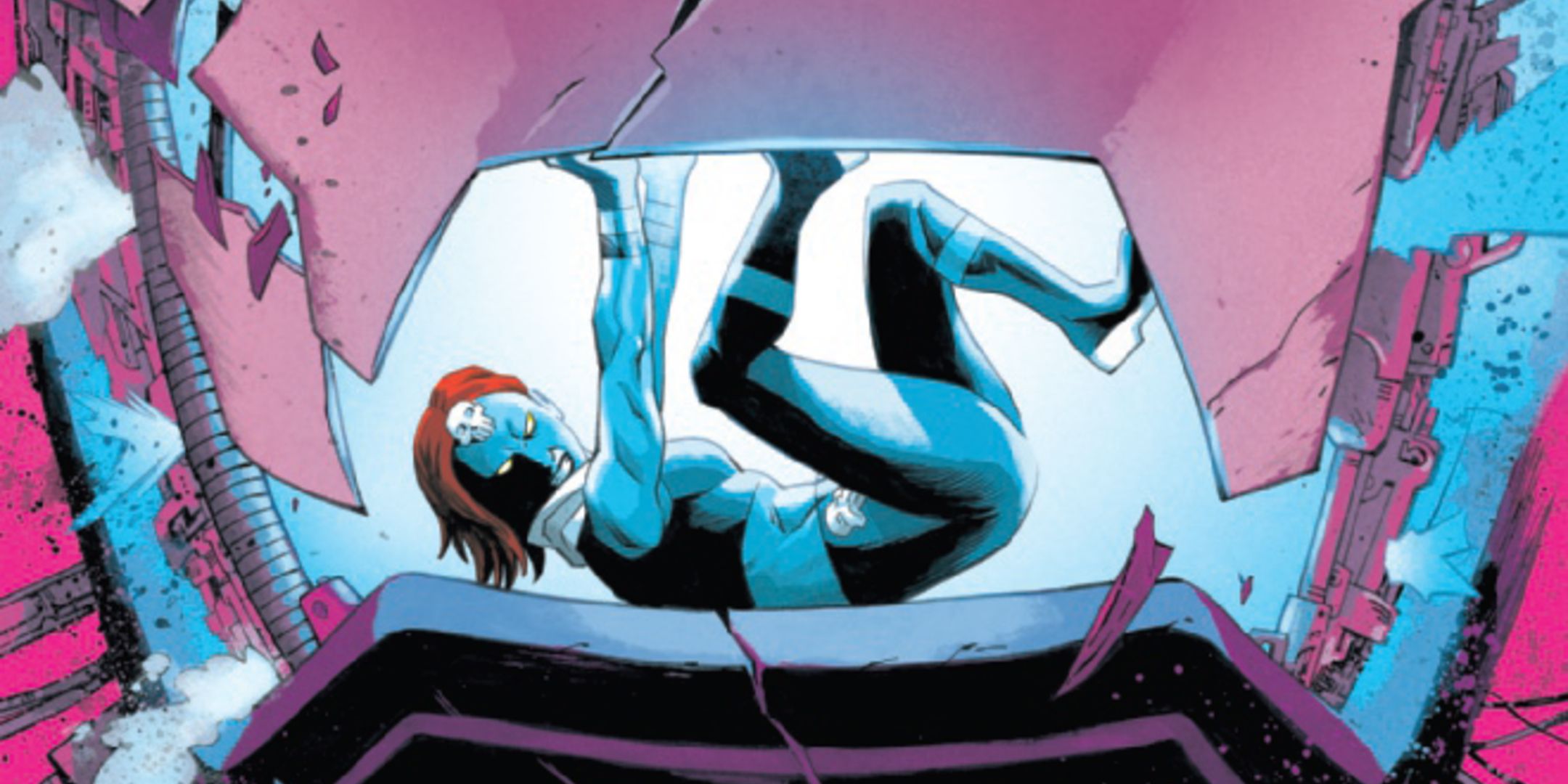Aug Stone | January 7, 2025
 Panel from the first Freddy Lombard book, The Will of Godfrey of Bouillon.
Panel from the first Freddy Lombard book, The Will of Godfrey of Bouillon.Note: This essay was originally published on the Humanoids website in 2015.
September 2008. I’ve come to Paris to see The Divine Comedy perform "an evening of chanson." They opened with Brel’s "Amsterdam" and closed with two of my favourite songs, seguing Françoise Hardy’s "Je Changerais D’Avis" into their own ‘Tonight We Fly." The only thing that could have made the evening better was if my feet weren’t hurting so bad. I had donned an old – and soon to reveal themselves very ill-fitting – pair of boots before rushing off to catch the first Eurostar that morning and had spent the entire day exploring Paris. But I kept on walking after the gig to where I was staying in a hostel behind Montmartre. Pausing in my painful perambulation, something in a long-closed-for-the-night comics shop caught my eye and arrested my step. A book cover on display. I stared for a very long time, knowing - despite my grasp of French being little better than my ability to choose proper footwear – that I would love to immerse myself in the world it proffered.
The next day I was to see this cover again and again in book shop windows. It had just been released. The utter sadness of the bald man with the monocle shedding a tear at the framed photo in his hands. A podium with whisky bottle and glass next to him on the snowy Belgian street (it could only be Brussels, with the Atomium haunting the background). A robot lying dead in the snow with a bellhop and a raincoated man standing over it. And compositionally that streetlight (always pleasing to me whenever they pop up in art), that streetlight dead center, shining above the title square:
CHALAND
COEURS D’ACIER
I wrote it down for later investigation, all further purchases in Paris having been cancelled. I had new boots to buy, after all.
When I got back to London I looked up this Chaland on the internet. The only information I could find on him in English was one paragraph in Paul Gravett’s "Hergé & The Clear Line". Luc Cornillon, a long-time friend and early Yves Chaland collaborator, would later tell me that Chaland had bad memories of learning English at school and that he chose to study at the academy in Saint Etienne because, unlike all the other art schools, Saint Etienne did not require one to take English classes. There’s a nice resonance between this and the lack of info on him in English.
 An undated photo of Yves Challand Photo courtesy of Luc Cornillon.
An undated photo of Yves Challand Photo courtesy of Luc Cornillon.One of the wonderful things about comics is that you don’t necessarily need to be able to know another language in order to read a comic. Though it does help. And thankfully I found that Humanoids, in collaboration with DC, had indeed released one translated series by Chaland, Freddy Lombard. Out-of-print at my time of discovery, I ordered the collected five stories second-hand. And my appreciation of Chaland’s work grew.
The following year, Gravett’s "In Search Of The Atom Style" would tell me a little more about this French genius. As well as the excellent Lambiek Comiclopedia. And the discovery of the No. 3 "English Edition’ of "Le Journal des Amis de Freddy" by Le Club des Amis de Freddy. In 2013 Gravett would write a great piece on Chaland and the Spirou book mentioned above.
But that’s about all there is. Which is why I decided to do a little investigating myself. Many thanks to Hanco Kolk, Luc Cornillon, Didier Pasamonik, Bruno Lecigne, and Joost Swarte, who took the time to chat with me about a man whose work should be much more widely appreciated in the English-speaking world.
“You’ll never be able to know all he did,” Luc Cornillon told me, “Even I, who knew him very well, don’t know all he did. He worked very hard, from early in the morning until late at night.”
To those who knew him, Chaland’s drive was as big as his talent. Joost Swarte picks up the theme: “Chaland had enormous production. He worked very, very hard, and was very, very busy.” Swarte laughed, “He always used to say to me, ‘You don’t work hard enough!'” Cornillon continued, “He was a perfectionist. More than a perfectionist! And at the time all this computer stuff didn’t exist. If it wasn’t perfect, he took his ruler and another sheet and drew it again until it was. Sometimes he did this three or four times. Even if there were only very small differences. He was interested in technical things too, like Ben-Day printing. He liked what Joost Swarte was doing with that. If you knew Chaland, he always used to have little pieces of Zipatone stuck to parts of himself.”
At school, Cornillon and Chaland made a fanzine, L’Unité de Valeur (the title "doesn’t mean anything in English, and not too much in French" Cornillon explained). “I sent it to [Métal Hurlant co-founder] Jean-Pierre Dionnet. He quickly wrote back to us at my home and a few weeks later we went to Paris to meet him," Cornillon said. "He was thinking of us for a new adventure comic, to be called El Dorado, but it was never finished. We started to work on it but ended up working for Métal Hurlant [with Chaland doing lay-outs]. We began to publish stories in 1978 and from there we did our first book together, Captivant.”
Captivant made quite the impression. “Immediately you could see the talent of Yves Chaland," Swarte said. "He had this feel of the quality of the old masters, but he wasn’t strictly trying to redo something from the past, he also added a humor that was more linked to the underground.”
“I was working for underground magazines and Humanoids sent me Captivant to see if there was a chance for a Dutch edition," Hanco Kolk remembered. "When I read Captivant, it changed my attitude to comics completely. Before that I thought "the Belgians, the classic school, that’s commercial stuff, you don’t want to deal with that." Then I saw the love in Captivant for the classics, and I thought, 'Well, he’s right, it’s wonderful stuff'."
Didier Pasamonik said that “In 1979, my twin brother and I had a bookstore in Brussels called Chic Bulle (an allusion to the comic book Chick Bill by Tibet). And one day three guys came in for all the Spirou, Tintin, and old comics we had. And I could read on the checks they signed that they were M. Chaland, M. Serge Clerc, and M. Cornillon. That’s how we met them. Of course we knew them because they were beginning to publish Captivant in Métal Hurlant. Captivant was a kind of parody of the old Belgian comic books.”
It was this parodic element, lovingly done, that especially appealed at the time. Humanoids’ Bruno Lecigne said, “Yves Chaland, like many others, learned comics by reading Tintin, Spirou, all the comics magazines for children. He liked the Belgian artists – Hergé, Franquin – very much and wanted to do something like these masters. But we were in the '70s, things had changed, and so he has to think about comics in another way. He won’t do adult comics, he won’t do children’s comics, so he does something like a parody with a very satirical, sharp-witted attack. Chaland worked with the style of the old masters but with the intention of turning his love of the Belgian comics into something new, in between the traditional and modern style. He was really one of the best who used the work of the past to do something new. Taking the classical Belgian style and using it to tell more modern kinds of stories. It was like a critical homage.”
 From the Freddy Lombard book, The Elephant Graveyard.
From the Freddy Lombard book, The Elephant Graveyard.The Pasamonik brothers would soon form the company Magic Strip and publish a good amount of Chaland’s work. “Chaland explained to us that he was working on a character called Bob Fish, a detective living in Brussels," Didier Pasamonik said. "Immediately we said to him, ‘Don’t make any mistake, we will help you’. So I sent him things like old packs of cigarettes from the '50s. In Bob Fish there is a lot of allusion to the old Belgium. On the first page you have a policeman in exactly the costume of the Belgian police in the '30s. And every few months he came to Brussels. Right next door to us was a big shop called Pêle-Mêle ("Mess"), where you could buy old Belgian magazines from the '50s for a few cents. For Chaland, it was a kind of Ali Baba’s cavern. So we worked together in collaboration for the Bob Fish book. And we decided to publish him because we were very young at that time (laughs).
"I have to explain that in the beginning it was very easy to be a publisher," he continued. "You just had to contact the author and we knew all the big names in Belgium. They were glad to see their old work remembered by the people and to earn money from it. We were friends with Franquin, we knew Hergé and Jacobs, etc., all of whom Chaland admired. I organized a meeting between Chaland and Franquin in Brussels. Isabelle Chaland still has the paper where I indicated to Chaland where Franquin’s house was and which tram to take. After the meeting Franquin told me, ‘I don’t understand why he draws in the '50s. He’s a very good artist. I don’t understand why he’s interested in such an old way to draw.' This was something Franquin could not imagine. But actually it was an aesthetic movement, even in the music and the movies. Remember that musically at that time the punks were explaining that there was no future. But some artists were looking back to the '50s and interested in rebuilding that naïve vision of the future from the old pictures and comics, when everything was so simple. For the future we just had to go to the moon. That’s really Chaland’s background. But Chaland wasn’t the only one. Joost Swarte was making a new modern style of Hergé, Floc’h was drawing a modern Jacobs, and Chaland was doing a modern mix of Tillieux and Jijé.”
Kolk agreed. “He was fascinated by the past. A man out of time, I think. He preferred to live in the '50s. He had a great original by Franquin on his wall. Not just an original but the original cover of his favourite story," he said. "I think what fascinated him was the overall spirit of the time. There was a big optimism, where people regarded science as something magical, that we were going to make a new world. Whereas today the future is a threat, at that time it was a challenge, and everybody was up for it. Scared, but optimistic anyway. And the Atomium is a symbol for that.”
Swarte added, “It was fashionable in those days to not only show your love for the older material in the drawings but also in your appearance. The new wavers often dressed in classy suits made of good material. Chaland paid attention to his clothes and liked to dress in the old-fashioned manner. His girlfriend Isabelle, who later became his wife, worked in the fashion industry and probably had some influence with that too.”
It is worth noting somewhere, so why not here, that Chaland was the colorist for the first book of Jodorowsky & Moebius’ game-changing The Incal, and his wife, Isabellem colored books 2-4. “Those warm, rich colors, he and Isabelle translated that into the universe of Moebius. It worked like a dream,” Kolk said.
 A Young Albert strip from the Humanoids collection.
A Young Albert strip from the Humanoids collection.Of Chaland's other work there is the futuristic Adolphus Claar (Cornillon’s favourite, “It was very fun”) and Le Jeune Albert, which was published in English by Humanoids in 2012 as Young Albert (my Quietus review here). The character of Albert was first seen in Bob Fish, and is, according to Swarte, “What they call in Brussels a ‘Ketje’, a little brat." Lecigne considers Le Jeune Albert to be Chaland’s masterpiece.
But, as Pasamonik explained, “Chaland’s main business was not the comics. At that time advertising was very important. And Chaland was the best paid artist in France.”
“He had two careers in parallel, half of his time he did comic strips, the other half advertising," Cornillon said. "He did a lot of advertising when he was in Paris. I don’t think there was anyone who did more than he did. He could do anything, and did do anything when he first started. But afterwards he was called for his own style. All the big companies – Citroën, Quick, many more – used to hire him because he was Chaland and they wanted something signed by Chaland, with his distinctive look.”
“His style was really commercial and spot on for the time,” Kolk said.
It is interesting to look at the development of Chaland’s style over the course of the five Freddy Lombard adventures. Pasamonik explained, “He created Freddy Lombard for us, it was the first title for our "Atomium" series. The name was inspired by Les Éditions du Lombard and the "Freddy" comes from Jijé’s first character, Freddy Fred. It’s a very referential book.”
Already a master of his beloved ligne claire, with Freddy Lombard he began to take risks compositionally and even more so with how he told the story. “You could see him further developing his craftsmanship," Swarte said. "Especially the pencil inking of his drawings was very effective.” Cornillon: “Each Freddy Lombard is very different from the one before. The first, The Will of Godfrey de Bouillon, is an adventure for kids in the Spirou way. The second one was an African story. He was such a big fan of Belgium that when his heroes went to Africa, it had to be Belgian Congo.”
Kolk picked up on a curiosity from the second book: “That Eppo cover he did for Cimetière des Elephants! [Eppo #4, January 28, 1983] I’m studying it all the time, wondering what kind of decisions did he make with the inking? I can’t grasp what he was thinking, but it works. It’s like that classic story of Matisse visiting Picasso and showing him this little still life. Picasso said, ‘This is a horrible painting, the composition is all wrong and this and this and this …’ ‘Yes’, replied Matisse, ‘but it works, doesn’t it?’ Picasso went ‘yes, but…’ and Matisse kept on replying, ‘but it works’. It drove Picasso mad, and that’s what that drawing does to me. It works but how does he do it?!”
It’s the third story where things really begin to change. With Yann Lepennetier now collaborating on the scripts with Chaland, the series raced far away from the Spirou and Tintin pastiches of the first two. Cornillon: “Comet of Carthage is quite dark. He went to Cassis in the south of France to take pictures and look at everything. And after that he started working on Comet. It was first published in Métal Hurlant and looking at it there, he thought, 'Oh my god, I’m not so sure everybody understands what I’m making.' So he redid some pages to make the story a little more understandable. Comet was something very different, something more intellectual.”
Kolk: “I read The Comet Of Carthage and thought, 'This is a weird album.' There was only one panel for the important things and the seemingly unimportant stuff takes pages. So I wrote to him and made a couple of suggestions, exactly what I tell you now, and I got a letter back. It said ‘Dear Hanco, you understand exactly what it’s about’. And I thought ‘Do I?’ (laughs) But it’s a great ride.”
 Sequence from F.52.
Sequence from F.52.The fourth Lombard volume, Holiday in Budapest, deals with the events in Budapest 1956. Chaland told Sapristi! magazine in 1990 that he "felt this was a book that should have been written back then" as all the comics from those days "were about current events" but never even mentioned the Russians crushing the Hungarian rebellion. The final story, F.52, published just before he died, pushes things even further, full of style and intrigue. Cornillon: “Story was something important for him, and he worked hard on [them]. Psychology is something that’s become more important nowadays, but it was always important for Chaland.” Ken Steacy noted in his appreciation of Chaland in The Comics Journal Feb 1991, F.52 “is indeed a horror story … genuine, deep-seated psychological and emotional horror as experienced from the point of view of a child intractably mired in a situation of nightmarish dimensions … Chaland understands perfectly that suggestion is more powerful than depiction … It is storytelling at its finest.”
Chaland told P.L.G.P.P.U.R. in 1982, "Ultimately, my work is my autobiography." Although he passed away in a tragic car accident on July 18, 1990, that work is still here, very much alive, for us to appreciate. And now Isabelle Chaland organizes the Festival Recontres Yves Chaland in Nérac, France, (where Chaland grew up) celebrating his life and work. I hope one day to attend.
A nice closing thought from his friend Hanco Kolk: “He was fascinated by the past but I would have loved to see him draw a contemporary comic. Maybe with the Chaland touch this world would look very nice.”


















 English (US) ·
English (US) ·